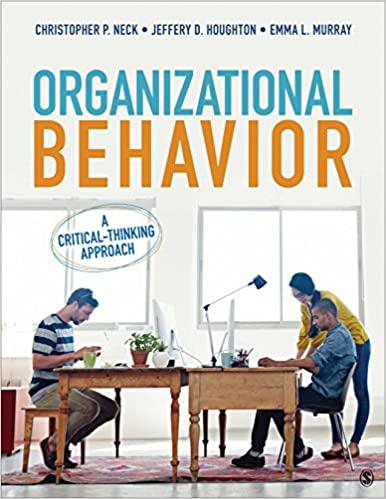Netflixs new employee practices have grabbed attention, to put it mildly. In 2012, a simple internal PowerPoint
Question:
Netflix’s new employee practices have grabbed attention, to put it mildly. In 2012, a simple internal PowerPoint explaining them went viral and was viewed more than 5 million times on the Web. Sheryl Sandberg, chief operating officer of Facebook, said it “may well be the most important document ever to come out of [Silicon]
Valley.” Dozens of bloggers and journalists scrambled to analyze its contents. And Netflix is surely doing something right: In 2013, the company’s stock value tripled. It reached a record 29 million subscribers and won three Emmy Awards for its original show House of Cards.
What was revealed in that game-changing PowerPoint? It was simply a “commonsense” approach, according to Patty McCord, then Netflix’s chief talent officer and one of the presentation’s authors. Netflix treats the people it hires as grownups. It grants them a great deal of freedom, and it expects them to use it wisely.
Game Changers Conventional human resources (HR) is full of structure and documentation. Directors spend hours drafting standard operating procedures about time off, performance appraisals, training, and more. Netflix has simplified the process by doing away with many of these policies and focusing on results rather than processes.
McCord realized that motivating employees to produce outstanding results had a lot to do with trusting them with greater independence. That didn’t mean installing an arcade or skateboard park, as other tech companies have done. Instead, Netflix started doing away with formal procedures. Among the first to go was the leave procedure. Gone were the standard 10 days of vacation, 10 holidays, and handful of sick days. The new policy?
Take what you need when you need it.
Giving employees the leeway to take as much vacation time as they’d like might strike many HR professionals as reckless. Wouldn’t people abuse such a liberal leave plan? McCord, however, had shifted to a different philosophy. Written policies, she reasoned, were mainly designed to eliminate problems created by a very small percentage of employees. The vast majority of people, and particularly the type of person Netflix tries to recruit, could be counted on to use common sense in their decision making.
Questions 1. How does Netflix use intrinsic motivation to support its HR practices?
2. Why would a creative firm choose to use intrinsic motivation where an industrial firm would probably choose to use extrinsic rewards?
3. Explain the appeal of nontraditional work schedules and how Netflix has chosen to implement them.
Step by Step Answer:

Organizational Behavior A Critical Thinking Approach
ISBN: 9781506314402
1st Edition
Authors: Christopher P. Neck, Jeffery D. Houghton, Emma L. Murray





